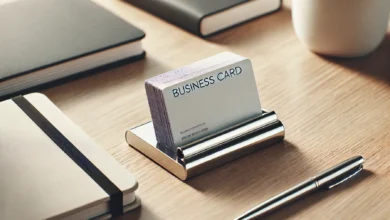Business Professional Attire

In today’s competitive work environment, making a strong first impression is crucial. One of the most effective ways is by dressing in appropriate business professional attire. Understanding the nuances of professional dress codes can help you stand out, whether you’re attending a job interview, meeting with clients, or simply aiming to elevate your presence at the office. In this article, we’ll explore the essential elements of business professional attire, offering tips on how to create a polished, confident look.
What Is Business Professional Attire?
Business professional attire refers to the formal clothing typically worn in corporate and traditional office settings. It conveys respect, professionalism, and a serious approach to work. The goal of this dress code is to project a competent, trustworthy image.
Importance of Business Professional Attire
In many industries, especially finance, law, and consulting, business professional attire is expected. It not only reflects your respect for the workplace but also builds trust with colleagues and clients. Dressing well can boost your confidence and set the tone for productive professional interactions.
Key Elements of Business Professional Attire for Men
Men’s business professional attire is rooted in classic, tailored pieces that exude professionalism. Here’s what you should consider when putting together your outfit.
The Suit
A well-fitted suit is the cornerstone of men’s business professional attire. Choose a dark-colored suit (navy, charcoal, or black) made from quality fabric. The suit should be tailored to your body shape, with no baggy or overly tight areas. Single-breasted jackets with two or three buttons are the most common choice for a professional look.
The Dress Shirt
Pair your suit with a crisp, collared dress shirt. White or light blue are safe color choices that complement most suits. Ensure that the shirt is neatly pressed and fits well. Avoid bold patterns; subtle stripes or a solid color are more appropriate.
Ties and Accessories
A tie is essential in business professional attire. Choose a silk tie in a conservative color or pattern—nothing too flashy. The tie should reach the belt buckle and match the formality of the suit. Accessories like cufflinks, a watch, and a pocket square can enhance your outfit, but keep them understated and classic.
Shoes and Socks
Complete your look with polished leather shoes—oxfords or brogues are ideal. Black or dark brown shoes are standard in business professional attire. Match your socks to your trousers, and ensure they are long enough to cover your legs when sitting down.
Key Elements of Business Professional Attire for Women
Women’s business professional attire offers a variety of options while maintaining a polished and conservative appearance. Here’s what you need to consider when assembling your outfit.
The Suit or Dress
A tailored suit, whether a pantsuit or a skirt suit, is a staple in women’s business professional attire. Dark, neutral colors like black, navy, or gray are preferred. If you opt for a skirt suit, ensure the skirt reaches the knee or just below. Dresses that are professional in style and length can also be appropriate.
The Blouse
Pair your suit with a conservative blouse or button-down shirt. White, cream, or light pastel colors work well. Avoid low-cut or overly tight blouses. Ensure that the blouse is well-pressed and fits comfortably under your suit jacket.
Shoes and Accessories
Closed-toe pumps with a moderate heel are the go-to choice for women’s business professional attire. Black, navy, or nude shoes are versatile and match most outfits. Keep accessories minimal and elegant—a simple necklace, stud earrings, and a professional handbag are sufficient.
Hosiery and Grooming
When wearing a skirt or dress, hosiery is typically expected in a business professional setting. Choose neutral tones that complement your skin. Additionally, maintain a neat and professional appearance with well-groomed hair and makeup that enhances your natural features without being overly dramatic.
Business Professional Attire for Different Seasons
Dressing in business professional attire can vary depending on the season. Here’s how to adapt your wardrobe for different weather conditions while maintaining a professional appearance.
Summer Business Professional Attire
In warmer months, opt for lighter fabrics like cotton or linen in your suits and dresses. Stick to lighter shades within the business professional attire guidelines, such as light gray or beige. Ensure that your outfit remains conservative, even if the fabric is more breathable. Women can consider short-sleeved blouses, while men can opt for lighter-weight dress shirts.
Winter Business Professional Attire
In colder weather, layering is key. Invest in a quality overcoat that complements your business professional attire. Wool suits and blazers provide warmth while maintaining a polished look. For women, tights can be worn with skirts for added warmth. Ensure that your outerwear is as professional as your indoor attire—this includes scarves, gloves, and even briefcases.
Business Professional Attire Do’s and Don’ts
To further refine your business professional wardrobe, here are some do’s and don’ts to keep in mind.
Do’s of Business Professional Attire
- Do prioritize fit: Tailoring is crucial. Even the most expensive suit can look sloppy if it doesn’t fit properly.
- Do keep your look polished: Make sure your clothing is clean, pressed, and free of wrinkles or stains.
- Do invest in quality basics: High-quality suits, shoes, and accessories will last longer and make you look more professional.
Don’ts of Business Professional Attire
- Don’t wear overly casual items: Avoid sneakers, jeans, and casual shirts, even on “casual Fridays.”
- Don’t go overboard with accessories: Less is more. Stick to classic, understated pieces that don’t distract from your overall look.
- Don’t forget grooming: A professional appearance isn’t just about clothing—maintain neat hair, nails, and overall hygiene.
How to Transition from Business Professional to Business Casual Attire
There may be times when your workplace allows for a more relaxed dress code, known as business casual. While business professional attire is more formal, business casual offers a slightly relaxed approach while still looking polished.
Transitioning for Men
To transition from business professional attire to business casual, men can swap their suits for dress slacks and a blazer. A collared shirt is still recommended, but you can lose the tie. Loafers or dress shoes without laces can replace more formal footwear.
Transitioning for Women
Women can switch their business suits for a dress or skirt and blouse combination in business casual settings. A cardigan or less structured blazer can replace a formal suit jacket. Comfortable, yet professional, shoes like ballet flats or low heels can also work.
Why Business Professional Attire Still Matters in a Modern Workplace
Despite the growing trend of casual work environments, business professional attire still holds significant value. It sends a clear message about your professionalism, competence, and respect for your work and colleagues. Even in industries where casual dress codes are the norm, knowing how to dress professionally for important meetings, interviews, or presentations can set you apart and make a lasting impression.
The Psychological Impact of Business Professional Attire
Wearing business professional attire can have a positive impact on your mindset and performance. When you dress the part, you’re more likely to feel confident and focused, which can lead to better work outcomes. Additionally, others may perceive you as more capable and authoritative when you’re dressed professionally, which can influence how they interact with you.
Conclusion: Mastering Business Professional Attire for Career Success
Understanding and implementing business professional attire is essential for anyone looking to succeed in a corporate or traditional work environment. By paying attention to the details of your outfit, from the fit of your suit to the polish on your shoes, you can present yourself as a competent and confident professional. Remember, dressing well is not just about following a dress code—it’s about showing respect for your work and making a positive impression on those around you.
Whether you’re just starting your career or looking to elevate your professional presence, mastering business professional attire is a valuable skill that can contribute to your success. Invest in quality pieces, prioritize fit and grooming, and always be mindful of the message your appearance sends. In doing so, you’ll be well on your way to making a lasting impact in the workplace.




